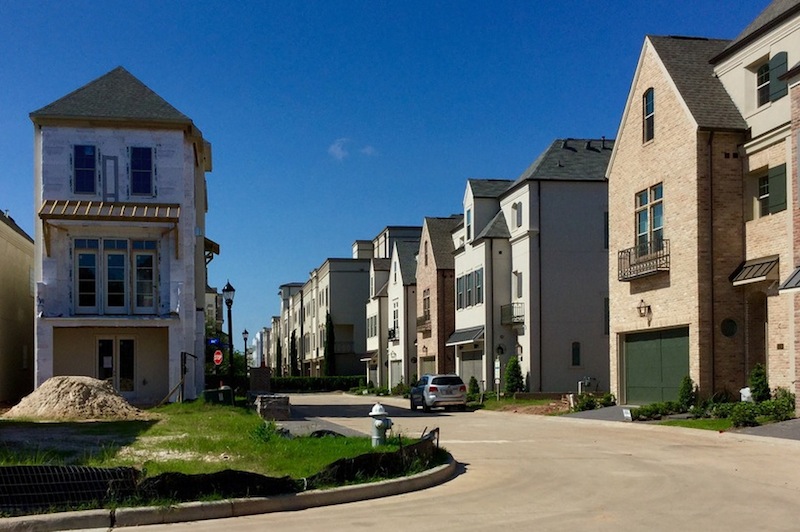
- 17-Story Apartment Tower Azalea Court Now Going Up Next to Highland Village Shopping Center [HBJ]
- 18-Story Solvay Chemical Office Building Under Construction at 3737 Buffalo Speedway Should Be 40% Preleased Sometime Soon; Hotel Coming Next [HBJ; previously on Swamplot]
- Whole Foods Market To Call Its New, Lower-Priced Stores 365 by Whole Foods Market [HBJ]
- The Houston Apartment Association Calls These Properties the Top 13 Apartments in Houston [Prime Property]
- Identifying Houston’s Transit Gaps, Before and After Metro’s Reimagining [The Urban Edge]
- Water Shortages Still a Problem for Texas, Despite Last Month’s Downpour [Houston Chronicle]
- Reddit Users’ List of Must-See Houston Landmarks [Houston Chronicle]
- Developers Will Soon Be Able To Expedite City Permit Approvals by Paying an Extra Fee [Houston Chronicle]
- Your Astrodome Seats Are Now Ready for Pickup [Click2Houston]
- Takeaways from the 1950 Houston Post Stylebook [Houston Chronicle]
Photo of King St., Lake Pointe, Sugar Land: Bill Barfield via Swamplot Flickr Pool
Headlines





Hate those condo/townhomes pictured. So unfriendly atmosphere. No driveway to park in, so you have to go straight into the garage when getting home. You go home, close your garage door, and seclude yourself from the world. No space for interaction with neighbors. No space for guests to park. At least apartments have common areas for neighbors to interact. Definitely not for me. Too confining.
Re: Transit Gaps
This type of geospatial analysis is so easy to obtain these days, and yet many public policy decisions either don’t use it, or ignore it. I would love to see a similar map of city park amenities, as discussed in previous posts.
The Developer “Expedited Permit Fee” is another in a disturbing trend…. those with $$$ get serviced faster than those without. This is OK in the private sector but not in government services. The limited number of staff will gravitate / be pushed by management to process the “Expedited” requests before the regular requests which means that everyone else will just wait even longer.
Brief rundown of why the “transit gap” analysis is stupid bordering on nonsensical.
—They count the number of routes as a plus, so replacing 2 or 3 hourly buses that go different mysterious places with one easily-legible 12-minute bus counts as a negative.
—They count the number of stops as a plus, so consolidating stops and making transit run faster for everyone counts as a negative.
—They count “low speed roads” and “number of intersections” as a positive, so providing more transit to suburban areas (where there’s less stuff you can walk to) counts less than providing transit to the urban core (where in lieu of a bus you can probably just hoof it).
.
So yes, Houston was already “well covered by Metro” in the sense that there were a lot of crazy, slow serpentine routes with odd frequencies, and yes, the city’s “worst transit gaps persist” in that no bus network revision can magically convert 1950s-1970s curvilinear subdivision design to an old-fashioned grid. Irrelevant analysis is irrelevant.
Jdog,
You make valid points about equity in the provision of city services. OTOH there are many developers who pull permits and then sit on them for months or years without doing one lick of work. These developers create a backlog for city inspectors and staff. What the expedited process does is separate those who are ready to build from those who are still getting all their ducks in a row for months or years.
@ JDog: Expedited permits make a lot of sense if the fee that is associated with them is sufficiently high. They could pay for the staff to process them in addition to more staff that could handle non-expedited permits, making things move faster for everybody. The devil is in the details, and how the program is executed.
@ PurpleCity: As usual, an excellent analysis on your part. Bravo.